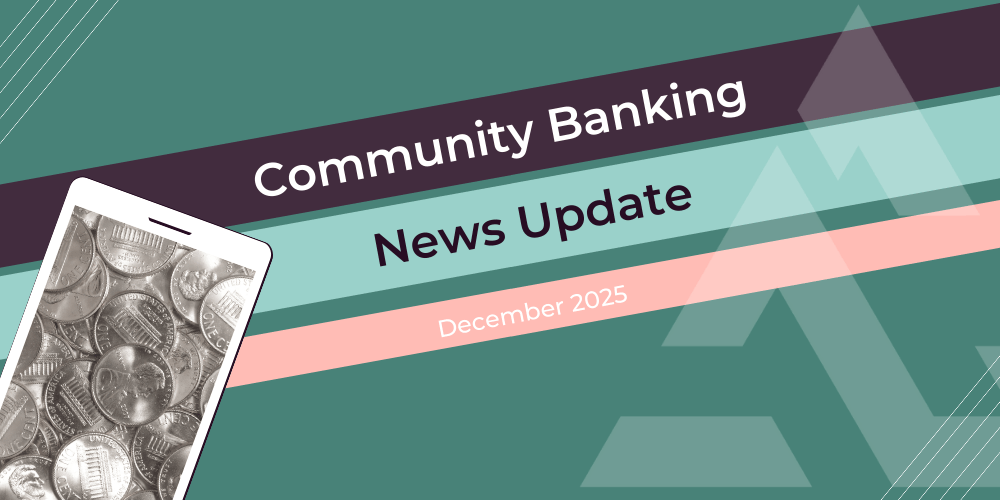When it comes to anti-money laundering (AML) compliance, don't overlook these essential components.
Every bank and credit union — regardless of its asset size — must ensure that its Bank Secrecy Act/ Anti-Money Laundering (BSA/AML) program is both comprehensive and effective. Regulatory scrutiny is increasing, and we’ve seen enforcement actions across the spectrum, from small community banks to large financial institutions. So what are the key components that every bank should be focusing on? Here are the five essential pillars of an AML program, along with key reminders for ensuring compliance.
1. Data: the foundation of an effective BSA/AML program
Data is the backbone of any AML program, yet data validation remains a major challenge for many financial institutions. Too often, critical transactional and customer data issues go undetected, leading to missed suspicious activity.
A broad and proactive approach to data validation is necessary. Banks must cast a wide net to catch errors and inconsistencies before they become regulatory issues. This is why having a dedicated business intelligence (BI) expert or SQL writer on your team is essential. Someone with strong reporting skills — and the ability to think like a criminal — can help identify anomalies and prevent compliance failures.
Additionally, data issues should be regularly presented to the Board, as they directly impact the effectiveness of an AML program. Without accurate and complete data, banks risk failing to detect and report suspicious activities properly.
2. Capturing AML risk across all business lines
AML programs should not only monitor transactions but also identify risk exposure across all areas of the institution. Many banks have blind spots when it comes to non-transactional risks. Areas such as:
- Commercial loans
- Wealth management
- Trust divisions
- Treasury management
- Mortgage affiliates
These business lines often fall outside the purview of traditional AML systems but must be evaluated for risk exposure, effectiveness, and monitoring gaps. If your AML program does not capture risks from these divisions, it may not be as robust as regulators expect.
Learn more about Acceleron Co-Founder and Chief AML Officer Sarah Beth Felix:
3. CDD/EDD must be a key part of AML alert dispositioning
Customer Due Diligence (CDD) and Enhanced Due Diligence (EDD) should be integral parts of how alerts are reviewed and dispositioned. However, many banks have performance metrics (KPIs) that emphasize the speed of clearing alerts rather than the quality of investigations.
This can lead to a “blinders-on” approach, where analysts clear alerts without referencing all relevant customer information. The right approach should prioritize thoroughness over speed. If your team is not factoring in CDD/EDD during alert reviews, it’s time to reassess how your AML program is structured.
4. Conducting two essential AML lookbacks
Many banks already perform lookbacks as part of their AML monitoring, but two specific lookbacks are critical:
- Suspicious Activity Report (SAR) and Suspicious Activity Monitoring Lookbacks – A review of SAR filings and the effectiveness of ongoing suspicious activity monitoring ensures no gaps in reporting.
- Negotiable Instruments (NGI) Lookbacks – Despite their importance, NGIs such as money orders and cashier’s checks often fall through the cracks. Many core and AML systems have tracking limitations, sometimes recording them as credits instead of debits or failing to show when an NGI is deposited or cashed. Without a dedicated lookback process, these transactions may escape proper scrutiny.
While these areas may not seem as “exciting” as crypto or cash-related monitoring, they remain fundamental to effective AML compliance.
5. Role of the AML officer in banking
One glaring issue in recent regulatory enforcement actions is the absence of a clearly defined Chief AML Officer. The OCC expects an AML Officer to be part of the institution’s senior management team, reporting under the directors or senior executive officers.
Failing to appoint a designated AML Officer not only weakens a bank’s compliance posture but can also lead to regulatory penalties. Every bank, no matter its size, should have a named AML Officer with direct oversight of compliance efforts and the authority to make necessary program adjustments.
Addressing regulatory challenges
Financial institutions spend millions of dollars annually to maintain AML compliance, yet many still struggle with regulatory expectations. A key issue is inconsistency among examiners. Banks often adjust their programs based on examiner feedback, only to face a new set of expectations when a different examiner takes over.
One solution is implementing the AML Act of 2020’s proposed examiner bootcamp, ensuring all examiners operate from a standardized framework. This would help level the playing field and create a more consistent regulatory landscape for banks of all sizes.
AML compliance is a moving target, and financial institutions must stay vigilant. By focusing on these five pillars — data integrity, comprehensive risk monitoring, effective CDD/EDD, targeted lookbacks, and strong AML leadership — banks can build a resilient program that withstands regulatory scrutiny.
For more insights on compliance best practices, check out my previous article: Top 3 Compliance-Related Issues with Your Correspondent Bank Relationship.
Acceleron builds patented software that allows community banks and credit unions to conduct international payment transactions profitably through a correspondent banking marketplace. Serving over 200 financial institutions and facilitating more than $1 billion in international payments annually, Acceleron helps small banks generate non-interest income and compete more effectively with high-fee big banks. Our solutions integrate seamlessly with top payments platforms, ensuring quick implementation and smooth operation.
Subscribe to our monthly newsletter, "The Exchange," to stay ahead of the curve and get original content you won't find anywhere else!
 Sarah Beth Felix, Co-Founder and Chief AML Officer, Acceleron
Sarah Beth Felix, Co-Founder and Chief AML Officer, Acceleron




